For the purpose of this talk, the views stated are my own, and the intended audience is this dharma study group.
There are at least three very good reasons why we should be aware of what distinguishes our movement from other Buddhist groups.
1) The first is so that we can be certain that we are in the best possible Buddhist group for us, and that we would not be better off in another one. Actually, we should have already have decided that this is the best possible Buddhist group for us, before we became mitras. But hopefully a deeper examination of this should give us even more confidence of that.
2) Secondly, maybe there are things we can learn from other Buddhist groups, and import them into our own.
3) Thirdly, once we describe ourselves to other people as Buddhist, they may have all sorts of different ideas what that means. In particular, if they are aware of another Buddhist group, it helps us explain more clearly the type of Buddhist we are affiliated with.
These issues are of particular relevance to myself, as back in the 80’s, I dropped out of the FWBO, as it then was, and deliberately investigated other Buddhist groups to see if another was more suited to me. After a thorough investigation lasting many years, I finally came back to Triratna, and I hope the reasons for this will become clear as my talk progresses. This talk will be partly autobiographical, as I believe that I learned a lot more about a movement by my involvement in it, rather than if I had just read a book by them. I apologise if I got some of the details wrong, as I am trying to remember events over 20 years ago.
The other Buddhist movements I will discuss are: Gaia House and Insight Meditation Centre, Goenka, Amaravati, Chogyam Trungpa, Samye Ling, Sogyal Rimpoche and FPMT together with its offshoot NKT
The above order is the order I shall deal with them. It is also the approximate order of the amount of religiosity they have.
Gaia House and Insight Meditation Centre
I went on 4 or 5 ten day retreats at Gaia House, back in the 90s. I also stayed in the community there, and in The Barn which was a nearby retreat centre based around organic farming.
They have tried to strip out all reference to Buddha and Buddhism from their teachings, although they do have visiting teachers who refer to Buddhism and the sutras a lot more. Certainly when I was there, there were no Buddha rupas.
Gaia House is a retreat centre, and now there is a group called ‘London Insight’ that puts on talks and meditations in London.
It is really good that this group exists, as many people are really turned off by anything that smacks of religion, so these people would feel at home here.
The ten day retreats they give are all in silence, but there is no emphasis on getting more and more concentrated. Half the meditation time is spent walking, and half sitting, and this seems to produce less concentrated states than if all the time is spent sitting.
There was no metta bhavana or devotional practices.
In fact a lot of the time, I was unsure what I was supposed to be doing. The teacher would say let’s meditate, and I would just sit for a bit, then watch my breath for a bit, and never really get anywhere.
By the end of the 10 days I would have the feeling that I had put a lot of effort in, but was unclear what if any benefit there was.
I had taken on the false view that this was the true path, and the only true way to wisdom. Eventually I realised there was no evidence for this, so I stopped going to these retreats.
I also did a 10 day Vipassana retreat in the IMS style at Wat Khao Tham in Thailand in about 1990 with similar results. The teachers there were trained by Joseph Goldstein and Jack Kornfield. Jack Kornfield actually turned up at the monastery at that time to visit.
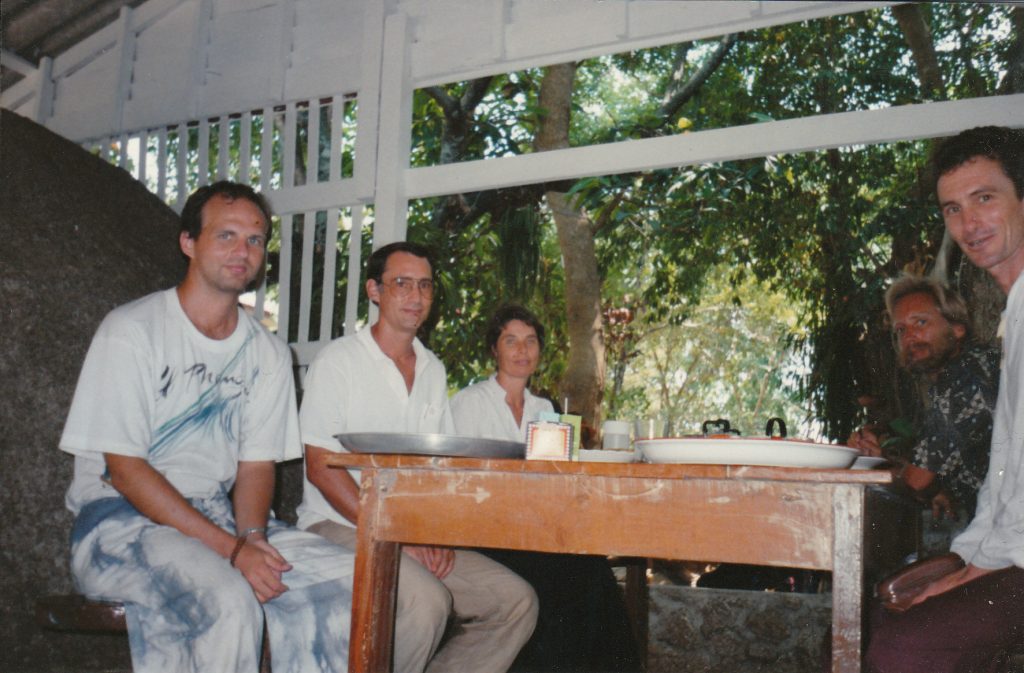

Goenka
My worst ever retreat experience was here. At their world headquarters Dhamma Giri in Igatpuri near Mumbai in 1987.
They would not let us eat after midday, and made us do a lot of sitting. The longest site was 4 hours long, broken down into 3 sections, an hour and a half in our huts, then an hour in the main shrine room, and an hour and a half back in our huts. All the meditation was sitting, there was no walking meditation.
The first 3 days was spent watching our breaths to get some concentration, the last 7 days were spent doing a slow sweeping or scanning exercise looking at sensations in small patches of skin up and down our body.
They took our passports off us and told us we could not leave till the end of the course. They also said if we tried other mediation techniques during the course we could go mad.
I found this retreat very boring, full of effort and unpleasant, and did not see any benefit at all.
I also found the teachings very confusing. We would see videos of Mr Goenka each day, but I do not think I found anything useful in what he said.
However I have to say that some people I deeply respect have had very good experiences on these retreats.
Both insight meditation and Goenka have tried to strip meditation out from the rest of Buddhism. I can see why they did this, but I believe that that are losing a lot in the process.

Forest Sangha Tradition
This is a theravadin tradition founded by Ajahn Chah in Thailand. The monks follow the Vinaya.
I went on a silent 10 day vipassana retreat with them at Aruna Ratanagiri in Northumberland in about 1995.
One thing that really struck me about them was the amount of renunciation they had accepted. They did not eat after midday. I remember that they were not allowed toast for breakfast. They had to eat gruel. Nevertheless, as I looked at the faces of the monks first thing in the morning, eating their gruel in silence, I could sense a deep wholeness and satisfaction which impressed me.
I did feel a sense of joy from the monks and nuns, and in general was impressed with their wisdom.
However, during one of my retreats with them, I began to really wish it was a triratna retreat, as I missed the warm emotions of the metta bhavana and the puja. That was the last retreat I went on with them. My experience with them seemed to miss out something important.
I do think it is really good that there is a group of people who stick to the vinaya, just as an example to the rest of us that it is possible. It is a benchmark against which we can compare our own lack of renunciation too. I also really appreciate the meditation instruction in some of the books that come out of this tradition including the writings of Ajahn Brahm who wrote “Mindfulness, Bliss and Beyond”.
Triratna
I will talk more about Triratna in the next section of the talk. I am just mentioning them here, as this is where I would place them in order of how religious they are compared to the other groups. This is fairly arbitrary, and of course the Forest Sangha is more traditional, but I would place Triratna after them because of the big Mahayana and Vajrayana influence in the movement.
Now we move onto the Tibetan groups. These are a very different kettle of fish. It is really like chalk and cheese, and it is sometimes easy to forget that these are actually the same religion as the Forest Sangha.
One particular trait common to all of the Tibetan schools is surrender to the Guru. I think this is a very good thing if the Guru is fully enlightened, but not good if he is not. In my opinion, none of the Gurus of the the following movements are enlightened.
Chogyam Trungpa and Vajradhatu
Chogyam Trungpa is of the Kagyu and Nyingma lineages.
On the positives. I have great respect for his wisdom, and also his leading disciples such as Pema Chodron and Allen Ginsburg.
Now for the negatives
Chogyam Turngpa was a heavy drinker. I am not going to judge him for that, as it was his choice. Despite this he was a wise teacher and helped a lot of people.
I stayed at Karma Choling for a few weeks, which is his retreat centre in Vermont. There was a definite hedonistic vibe there. Two people on the retreat got off with each other and started sleeping together.
There was also talk later of a scandal where Trungpa’s successor Osel Tendzin had unprotected sex with multiple students over a three year period even though he knew he was hiv positive, and he kept that fact hidden. In those days, hiv was a death sentence. I find it hard to believe that anyone could be so selfish to put their pleasure above that of other people’s life. It is hard for me to understand how someone like that could rise to the top of the movement?
Another thing I did not like was that we were supposed to keep our eyes slightly open during the meditations. I did find it hard to meditate like this.
During the retreat, they would serve lunch in the shrine room, and we would eat it as a ritualised spiritual practice. We were handed out a bowl, and then served various courses in it. Then finally water was poured into the bowl to wash it which we then had to drink. Then the bowls were piled up to be used at the next meal, without having touched any fairy liquid. It was a ritual, I believe that was imported from Shunryu Suzuki. I did find it disgusting, and I am happy I do not have to repeat the experience.
I did like the people there, but I did sense a lot of ego. I did not really sense a refined spiritual energy.
One thing I remember was that I witnessed a big shouting match between the chef and the accountant, as the accountant refused to pay the food supplier because of money problems, so they loaded all the food back onto the van and drove away.
Samye Ling
This is a kagyu monastery in Southern Scotland. It was the first Tibetan Buddhist Centre to have been established in the West in 1967.
I stayed there for a fortnight in 1981. I remember every day started with a puja where we chanted these obscure Tibetan words from a scroll to the cacophonous sound of some monks playing loud trumpets and beating various percussion instruments.
I loved the energy of the pujas. In one of the work periods I was given a pick axe and asked to axe massive boulders to make way for their new shrine. This was the hardest physical work I have ever done. I was given the Green Tara mantra by Situ Rinpoche.
I did find the teachings hard to follow, as they seemed very abstract and divorced from common sense.
There was a strong devotional energy to the bodhisattvas. They also offer a traditional four year retreat.
Sogyal Rimpoche and Rigpa
Although he was brought up with the traditional training of a Tibetan lama, Sogyal has tried to make the teachings accessible to a more Western audience.
During a week retreat I went on with him in about 1984, I remember him pointing at all the rupas on the shrine, and saying ‘these are just props’. I admired this attempt to try and debunk a bit of superstition from the ritual, and focus on what was important, which is our inner experience. He wanted all retreatants to take refuge. I refused, as I knew how sacred and significant this was in the Triratna Tradition, so I wanted to think about it a bit more.
There has since been a big controversy concerning Sogyal Rimpoche’s behaviour.
Lama Yeshe, Lama Zopa and FPMT (federation of the preservation of the Mahayana tradition).
This is a gelugpa group. I did a couple of 10 day retreats with them in 1984 in Kopan Gompa in Kathmandu and Tushita near Dharamsala.
I was very struck by how happy the devotees were. They had a good understanding of Buddhist psychology that we study in this dharma course.
They have absolute faith in their guru. This does of course have benefits, as it helps them open up to the teaching, and become more motivated. But it does mean that old superstitions get repeated and believed without question.
I can give some examples of this.
On a lam rim retreat in Kathmandu, our American retreat leader told us that when someone died, if the last place they were touched was on the legs, then they would be reborn in the lower realms. He said if we were around someone who was dying, we were the dharma practitioners, so we should take control. We should get everyone else away from the dying person, so they were not touched on the legs. He also advised us to cut up our kidney donor cards, as having them would increase the chance of this happening to us.
Another superstition concerned the disposal of the food offerings in the puja. It is said if you let 4 legged creatures eat them, you would be reborn in the lower realms. You should put them up high, so that 2 legged creatures (i.e. birds) would eat them. Someone was actually quite worried because she had disposed of them the wrong way. She was given a special practice to do which they said would let her off the hook.
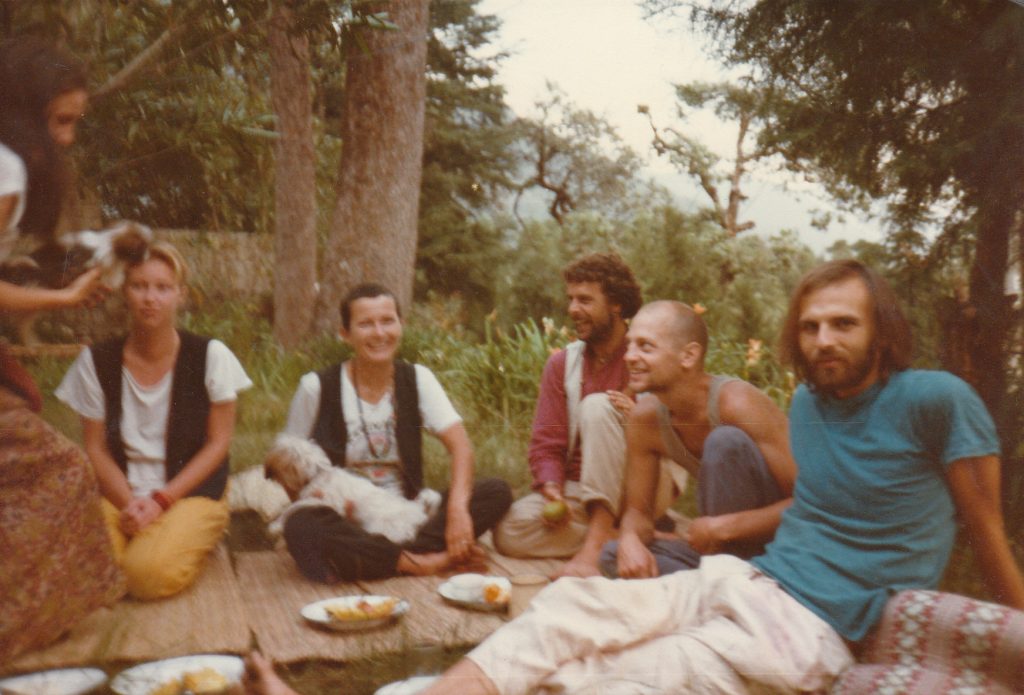



Kelsang Gyatso and New Kadampa Tradition
Kelsang Gyatso was trained at the same monastery as Lama Yeshe, and had the same root guru so there a lot of similarities. They are probably the fastest growing Buddhist group in the UK, because they have a very slick publicity machine. They know how to use the press to their advantage, and have very attractive posters and leaflets that they leave around. Triratna could definitely learn a thing or two from them.
Like FPMT, they believe a lot of things just because their Guru said so. They told me that at the moment of the Buddha’s enlightenment, he had perfect knowledge of everything that was going to happen in the universe in the future.
This is obviously rubbish, as we know from the sutras, that the Buddha was fallible, and made mistakes.
Triratna
Anyway. After that whirlwind tour, we can move over to the relative sanity of Triratna.
I will not list out all Triratna’s wonderful qualities and practices, as I think we are all too aware of them.
The main difference from the vipassana and theravadin groups is that we have a very strong Mahayana and vajrayana influence, and we also elevate the metta bhavana as a practice of equal importance to the mindfulness of breathing.
Most of the other groups I mentioned are continuations of a single long lineage and tradition. Triratna on the other hand is ecumenical and embraces the whole Buddhist tradition. This is really important, as it allows us to incorporate the best bits from each tradition. I believe the vipassana and forest sangha movements are really missing something, by ignoring the concept of the bodhicitta.
The space at the end of the puja after transference of merit and self surrender, is so beautiful, and I find it one of the biggest motivators to practice. To open up to that space.
However, the vajrayana includes the Mahayana and hinayana. So likewise, the Tibetan groups also have a sort of ecumenical feel to them, and in a sense they include the theravadin.
The main difference with the Tibetan groups, is that we do not surrender so totally to our guru that we are unable to question the teachings we are handed down. It is not enough just to say we know ‘X’ is true because our guru says so. What about the kalama sutta? We should use a bit of common sense, and test these things out, otherwise we end up believing and repeating a lot of superstition.
As someone trained in the Western scientific method, I just cannot bring myself to take on beliefs without any evidence. And if I could, I might as well, just be a Christian.
I can see that Triratna is constantly evolving. It has changed so much from the early eighties when I first got involved.
Spiritual friendship is highly valued in Triratna, and it is one of the most valuable aspects, in this world of disconnection and lonliness.
These are some of the things that make it unique in the Buddhist world. All based of course on the presentation of the Dharma and Sangha by our teacher Sangharakshita.
The pictures below are not strictly relevant to this tour of different traditions, but I couldn’t help including them 🙂 They were taken during my four month trip to India in 1984. The first four were taken in the Tibetan monastery in Bodhgaya where I was staying. These young children were (I think) supposed reincarnations of previous monks. They were fascinated to watch me doing yoga 🙂
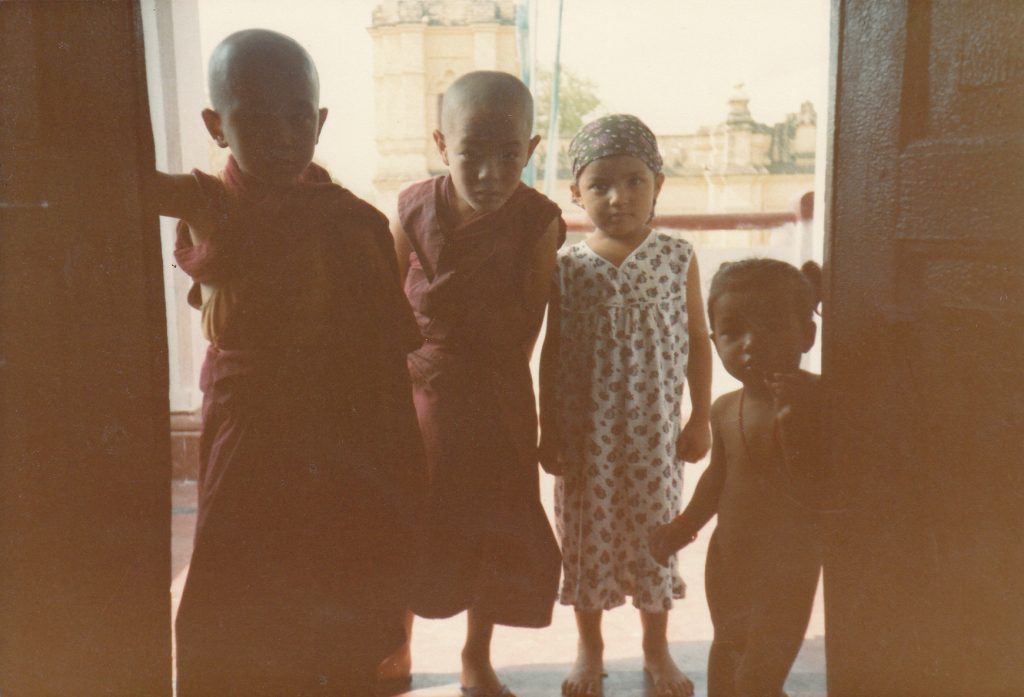

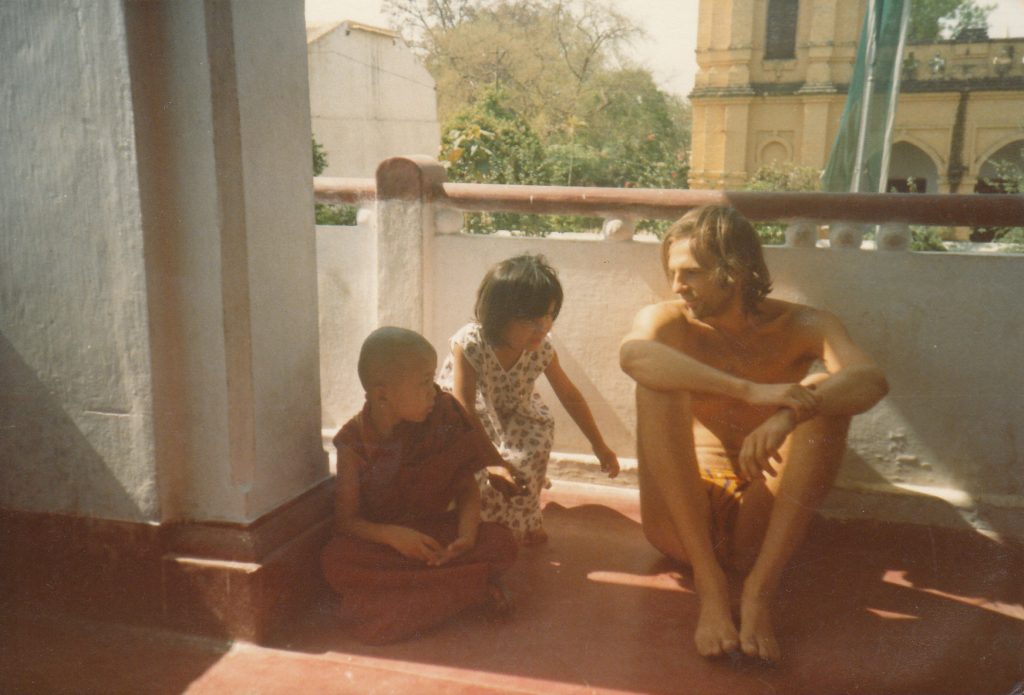
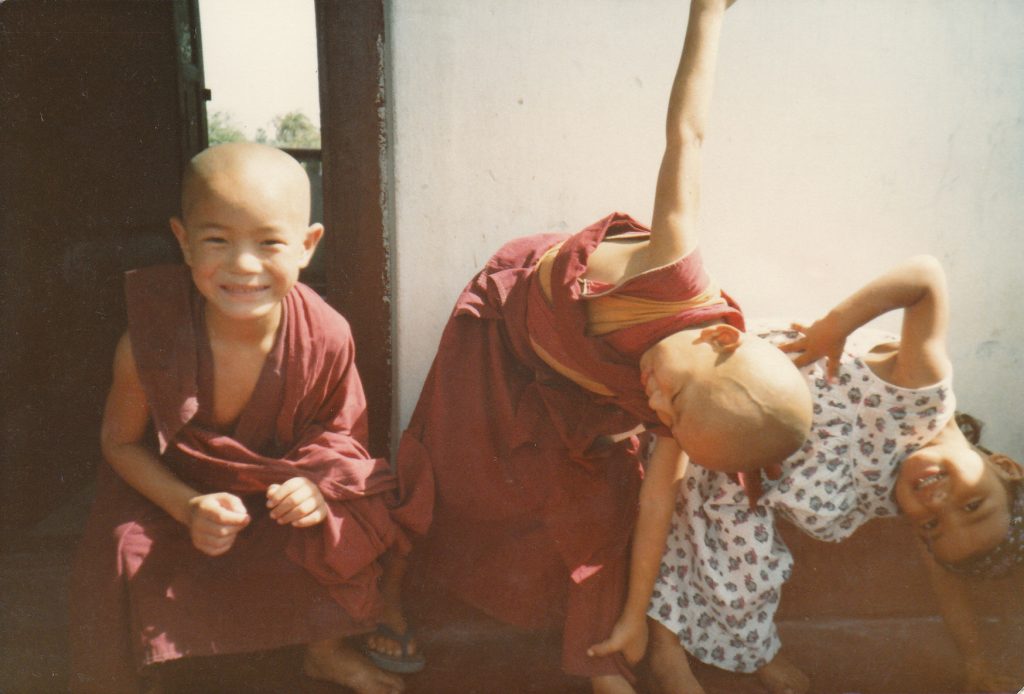
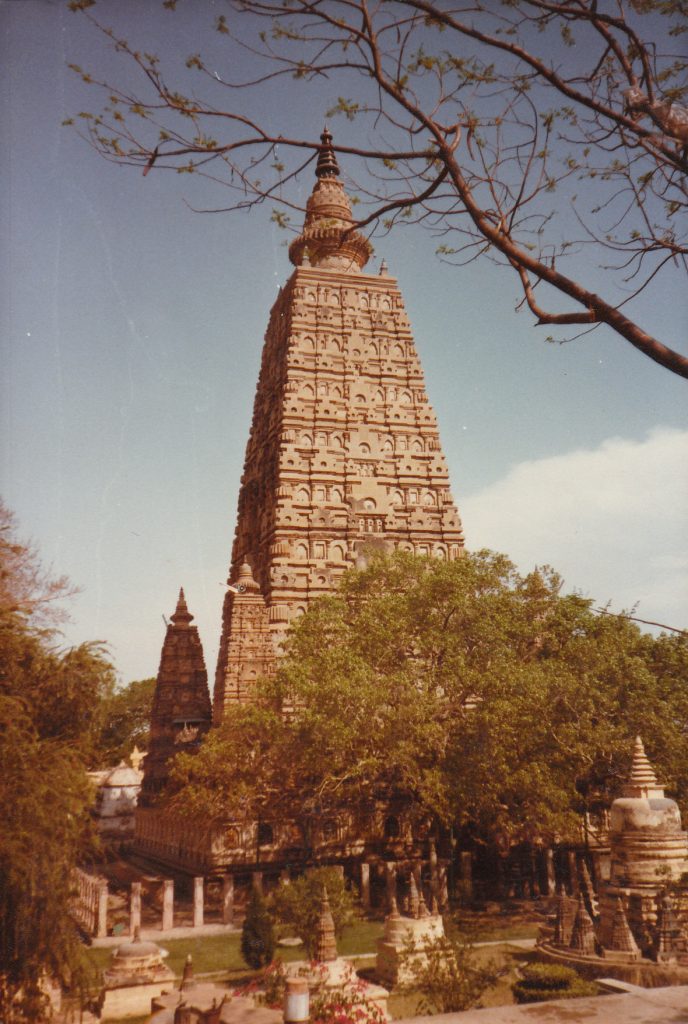
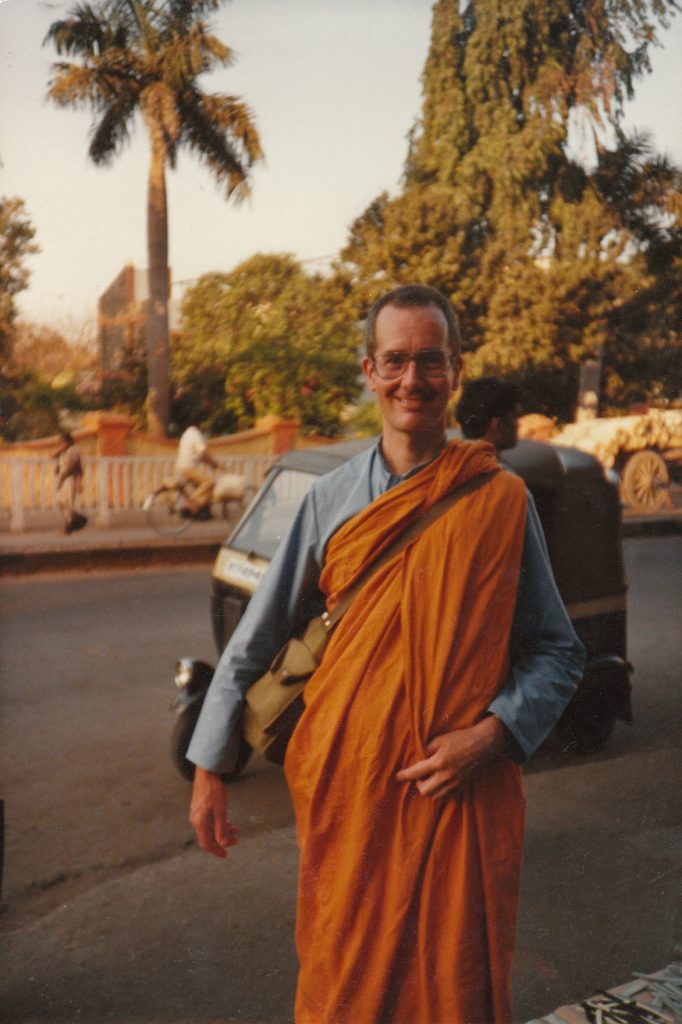
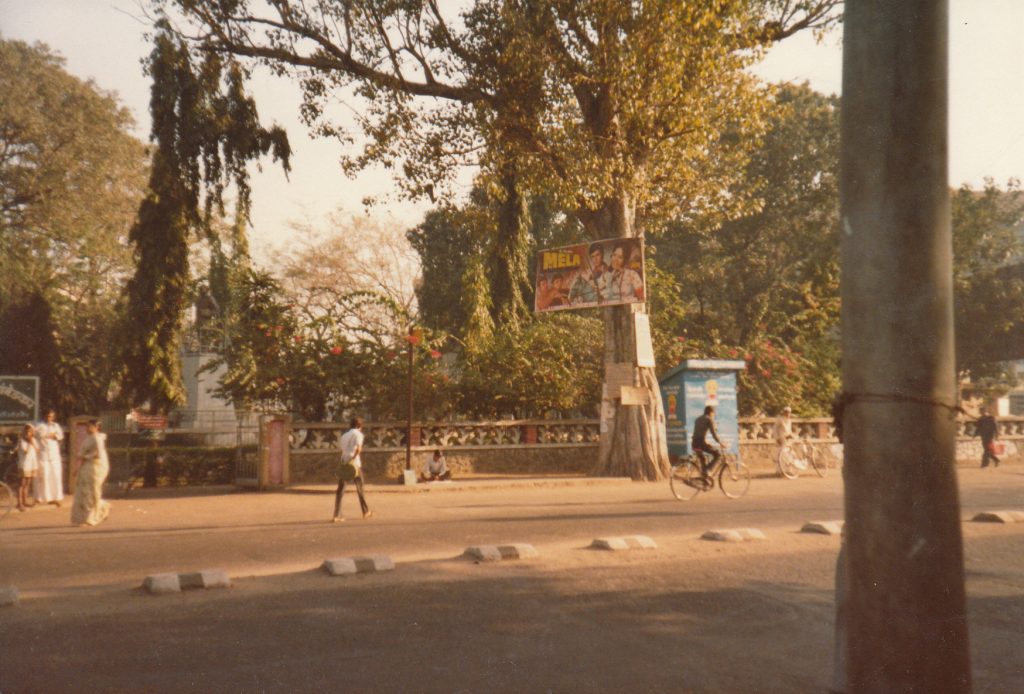

Below are some photos from the LBC Summer Retreat at Battle led by Dharmadinna in the Summer of 1984.
In this photo, I am making an offering in the middle with white trousers. Full article about the retreat by Paramabodhi (Hugh Mendes) is at FWBO-NEWSLETTER-ISSUE-63-AUTUMN-1984.pdf (adhisthana.org)






